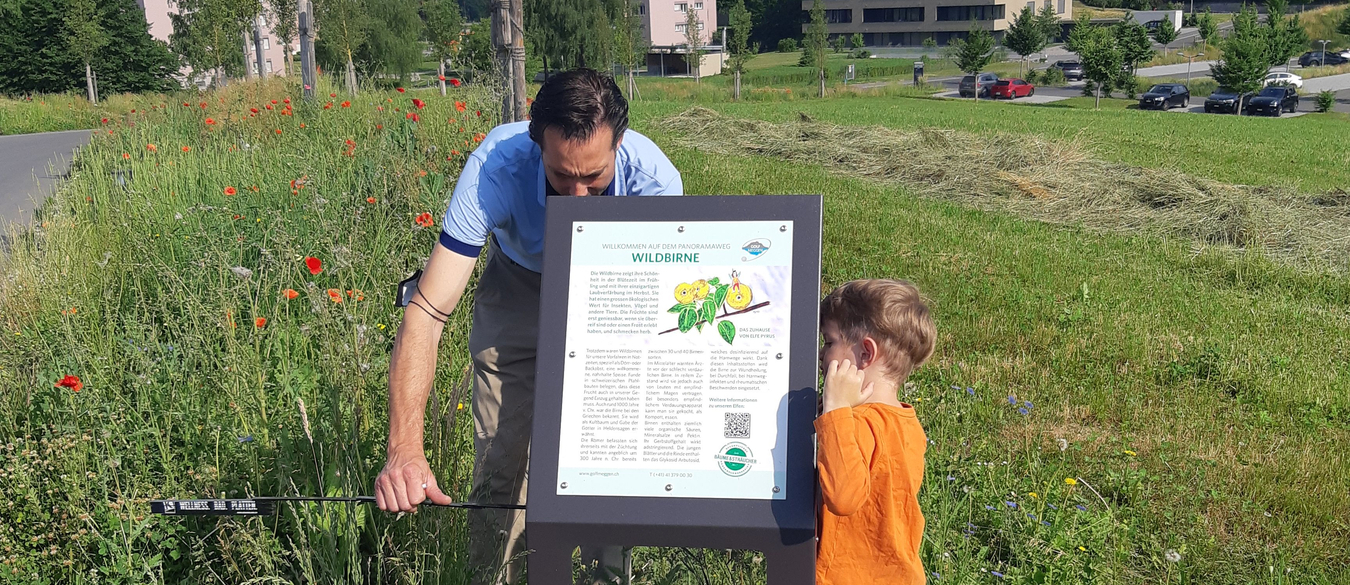We are proud to say that the Golfanlage Meggen has been self-sufficient since its opening and has not used any drinking water for the irrigation of the sports and leisure facilities.
Only for the seeding of the playing surfaces was 6,000 cubic metres of water from the public network used in summer 2017.
During the construction of the 9-hole and 6-hole course, these five ponds were built and existing, very old spring water pipes were renewed and thus meticulous attention was paid to being able to store as much water as possible.
Non-golfers will certainly be interested to know which ponds can be found on the golf course. Some of them are only visible to golfers because they are on the fairways. We are happy to present them to you together with the pictures.
Our ponds are functional and at the same time habitats for flora and fauna.
The banks are of different widths, depending on how they are embedded in the course of play and maintenance. As a result, the plants have a habitat of varying extent. For each pond, between three and 22 plant species were found from the open water to the end of the wet bank.
Ponds 1 and 2 serve as water reservoirs for possible irrigation. Ponds 3 to 5 are attractive play obstacles created where they can serve as retention troughs during heavy rainfall.
Rainwater storage
We wanted to be able to store the rainwater in the long term and therefore laid drainage pipes. Via these drainage pipes in the ground, the rainwater is led into the storage lakes and from there it is used for the irrigation of the golf course.
In addition, the rainwater that collects in the asphalted areas around the maintenance yard is fed into the existing slurry silo. The slurry silo has been used as an additional water reservoir since the construction of the golf course. The washing water that is used to clean the golf machines is fed into the manure silo together with the rainwater from the maintenance yard via a sedimentation basin. The slurry silo is thus used as an intermediate reservoir and the water is then pumped into the reservoir.
The high initial costs of the ingenious water concept have paid off very well.
Pond 1, the peat pond, was excavated in a pre-drawn wet hollow. The subsoil consisted of an almost 2m thick layer of peat, which had been tilled and planted for decades. Next to this pond, a new reedbed could be established.
Pond 2 is the largest and was mainly designed as a defining landscape element and water reservoir. Together with Pond 1 and the connecting stream, it collects all the water from the western square. The system of ponds, ditches and reeds forms an important centre for native plants and animals.
Pond 3 is the smallest and is mainly used for the retention of rainwater and also as a design element in playground 2. It is mainly populated by aquatic plants and visited by waterbirds.
Pond 4 is located far away from the fairways and driving range. It has an important retention function for the rainwater from the valley near the Badhof before it flows into the newly opened Stampfibach. It was designed as a near-natural biotope with bushes, shallow water and wide banks.
Pond 5 lies in a deep hollow and is played over from high up. Although it lies in the course, it is hardly touched by the game and the players due to its location. It forms a quiet water body for native animals and plants. The banks are very narrow due to the steep slopes, but are supplemented with surrounding flower meadows.














